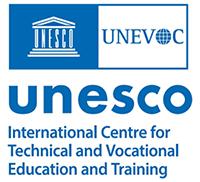
The UNESCO-UNEVOC International Centre: Who We Are | What We Do | Working With Us | Get in Touch
The UNEVOC Network: Learn About the Network | UNEVOC Network Directory
For Members: UNEVOC Centre Dashboard
Thematic Areas: Inclusion and Youth | Digital Transformation | Private Sector Engagement | SDGs and Greening TVET
Our Key Programmes & Projects: BILT: Bridging Innovation and Learning in TVET | Building TVET resilience | TVET Leadership Programme | WYSD: World Youth Skills Day
Past Activities: COVID-19 response | i-hubs project | TVET Global Forums | Virtual Conferences | YEM Knowledge Portal
Our Services & Resources: Publications | TVET Forum | TVET Country Profiles | TVETipedia Glossary | Innovative and Promising Practices | Toolkits for TVET Providers | Entrepreneurial Learning Guide
Events: Major TVET Events | UNEVOC Network News
Training that is given in an orderly, logical, planned and systematic manner in a specially equipped workshop under the guidance of a qualified trainer for a specific period of time in the specified field.
1. Training in which the role of the learners and the teachers is defined and in which one party has the responsibility for training the other.
2. Training that is provided in a training establishment rather than independently or on-the-job.
 Source:
Source: Ministry of Labour, VTC, Department of statistics, National Centre of Human Resources, Glossary of selected terminology: The labour market and vocational education and training - Occupational safety and health. The Hashemite Kingdom of Jordan, 2005 - Not available online
Ministry of Labour, VTC, Department of statistics, National Centre of Human Resources, Glossary of selected terminology: The labour market and vocational education and training - Occupational safety and health. The Hashemite Kingdom of Jordan, 2005 - Not available online
Instruction given in education and training institutions or specially designed training areas, including enterprises in formal apprenticeship systems. Training is structured and systematic, and follows pre-defined content and precise learning objectives.